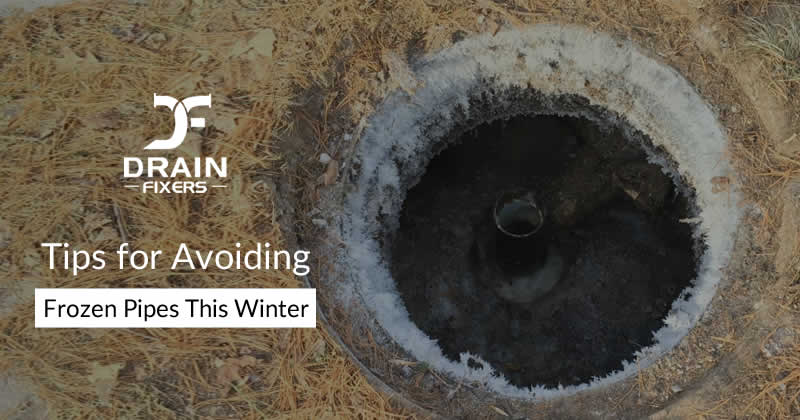Freezing weather is a big problem for your home’s plumbing. When temperatures drop below zero, water inside your pipes can freeze and create blockages, which increases pressure until they eventually burst. The result? Significant water damage and flooding, plus a big drain repair bill.
Fortunately, there are ways to prevent this. Just taking a few preventative measures before the real winter chill sets in can protect your pipes and prevent the chaos of blocked sewer pipes.
Here are five practical tips to keep your pipes warm and cozy and your water flowing, even during the coldest months.
1. Use heating tape
Heating tape is an excellent tool for protecting pipes that are susceptible to freezing. It delivers some warmth directly to your pipes to stop a layer of ice from forming on top. It’s cheap, too. There are two types of heating tape:
- Automatic heating tape turns itself on and off depending on the pipe’s temperature.
- Manual heating tape doesn’t have a sensor and requires you to switch it on and off yourself.
Automatic tape is the clear winner here. We can recommend using it for both safety and convenience — you don’t want to spend too much time outside in the cold! Just make sure to follow the manufacturer’s instructions when installing it.
2. Keep interior doors open
Keeping cabinet doors in your home closed seems like common sense. However, your pipes might be missing out on all the warmth from your central heating system. Opening interior doors where pipes run behind actually helps the hotter air enter to circulate around them.
While you might not want everything open all the time, this is a great way to prevent freezing and blockages across the system during very cold snaps. And it’s easier than other forms of insulation!
3. Maintain heat while you’re away
Heading off for a winter break? Don’t switch off the heat completely.
Big drops in temperature can ravage pipes between December and February. If you’re planning to leave your home for more than a few days, try to keep your heaters set to at least 50F (10C). It might feel like wasted energy, but maintaining at least a mild temperature inside the house can keep your plumbing system in optimal condition.
The alternative is coming back home and potentially dealing with expensive burst pipes and blocked drain repair headaches, which will require hefty emergency repairs.
4. Cover and insulate exposed pipes
The milder autumn (or even summer) months are the best time to inspect your system to see if any maintenance or upgrades are needed. If you spot any gaps or cracks where pipes pass through falls, it’s important to seal them.
You can do this using:
- Foam pipe insulation – Affordable and easy to install
- Fiberglass insulation pipes – Great for pipes in unheated spaces like basements or garages.
- Pipe heating tape – Adds warmth to outer layers to prevent freezing
- Pipe sleeves or covers – Available at most hardware stores to provide additional protection.
Exposed pipes are a ticking time bomb. When the snow and sub-zero temps hit, they are much more likely to freeze. Just some quick DIY work will prevent cold air from hitting them directly.
5. Open a faucet slightly
It might sound counterintuitive, but a running tap can keep your system on its toes and make it less prone to cold weather. You don’t need to run both taps at full tilt for hours, though. Just a slow trickle of water running through the pipes can prevent them from freezing. Why? Because moving water is less likely to turn to ice.
Again, take one more look at your pipes before winter. You could add a second layer of protection — Canadian temperatures can be brutal, so don’t take any chances! Prioritize the coldest spots and work from there.
Don’t wait until pipes burst – Call the pros
It’s tempting to think that everything is fine if you aren’t experiencing major problems, but if you spot or hear:
- Strange noises like banging or gurgling
- Frost visibility forming exposed pipes
- Reduced or weaker water flow from taps or showers
- Unusual smells from drains
- Cold spots on the walls near pipes
It’s a sign that things are about to get a lot worse. Don’t delay. Call experienced drain repair professionals who will be able to prevent further damage and safely clear blockages so your plumbing remains in tip-top condition during the whole winter.
Drain Fixers has a team of drain repair specialists ready and waiting to sort out all your plumbing issues. We can help you avoid the stress (and expense) of burst pipes. Contact us today to arrange an inspection or service.
